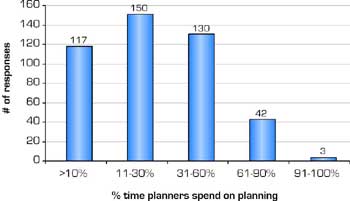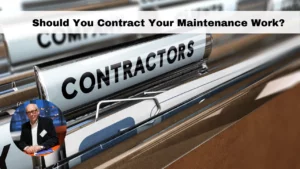In Part 1 of this series on maintenance leadership, I explored two points:
Maintenance leaders need to know what to lead toward in order to become effective leaders.
The leadership role is all about getting other people to do what you want them to do.
Let’s expand on that second point.
To get people to do what you want them to do, you must continuously build business processes that enable them to perform at their best. As a maintenance leader, you must realize that people can never be more effective than the system they work in.
In a recent Web survey of 442 maintenance leaders, IDCON asked: “How much time does your maintenance planners spend actually planning maintenance work?” Sixty percent of the respondents stated less than 30 percent of planners’ time is spent on planning work. Twenty-six percent said planners plan less than 10 percent of the time.

In a follow-up survey, we asked, “Why do planners not plan?” Given 11 choices, the respondents said the top three reasons are:
- Too many emotional priorities (work that could wait breaks schedule).
- Too many do-it-now jobs due to equipment breakdowns.
- Operations does not support the planning process.
In this example, leaders must help set up roles and responsibilities for planners and people involved in the planning and scheduling process and then make sure the processes are followed.
They should work with operations, stores and engineering to agree on work order priority rules, schedule cut-off times, identify critical equipment and spares, and much more.
The chance of getting people to do what you, as a leader, want them to do increases drastically if enablers are instituted in the plant.
Walk the Talk
Realize that your people follow your lead.
Employees do what you do, not what you tell them to do. It’s critical to “walk the talk” by following up and sticking to the plans, best practices and enablers that you, as a leader, have put in place.
A maintenance leader that constantly starts meetings late will have a very hard time instilling good scheduling practices in the organization.
A leader can’t expect quality work order plans if he or she constantly asks for completion of unnecessary last-minute work.
A leader can’t expect world-class craftsmanship if craftspeople aren’t trained, or there is a lack of financial support for repairs, no time given to complete jobs, no standards or no detailed expectations.
If you are a true maintenance leader, make sure each attempt at improvement has substance behind it by producing a solid plan where cost and benefits are considered before involving the whole organization.
It’s very common to see a plant sign up for the project of the month, only to have it replaced by a new effort a few months later.
While visiting a plant a few years ago, I mentioned that reliability improvements should go on forever. It is a continuous process.
A craftsperson in the audience said, “In this plant, forever is eight weeks, and the yield for reliability improvements in eight weeks will most likely be fairly small.”
Not understanding quite what he meant, he further explained, “All started improvement efforts are announced to last forever. The average life of a new improvement initiative in the plant is about eight weeks. Therefore, forever in this plant means an eight-week project.”
Even though the statement was meant partly as a joke, he was right on the money for this particular plant.
Look for Part 3 of this discussion in the next issue of Reliable Plant.





